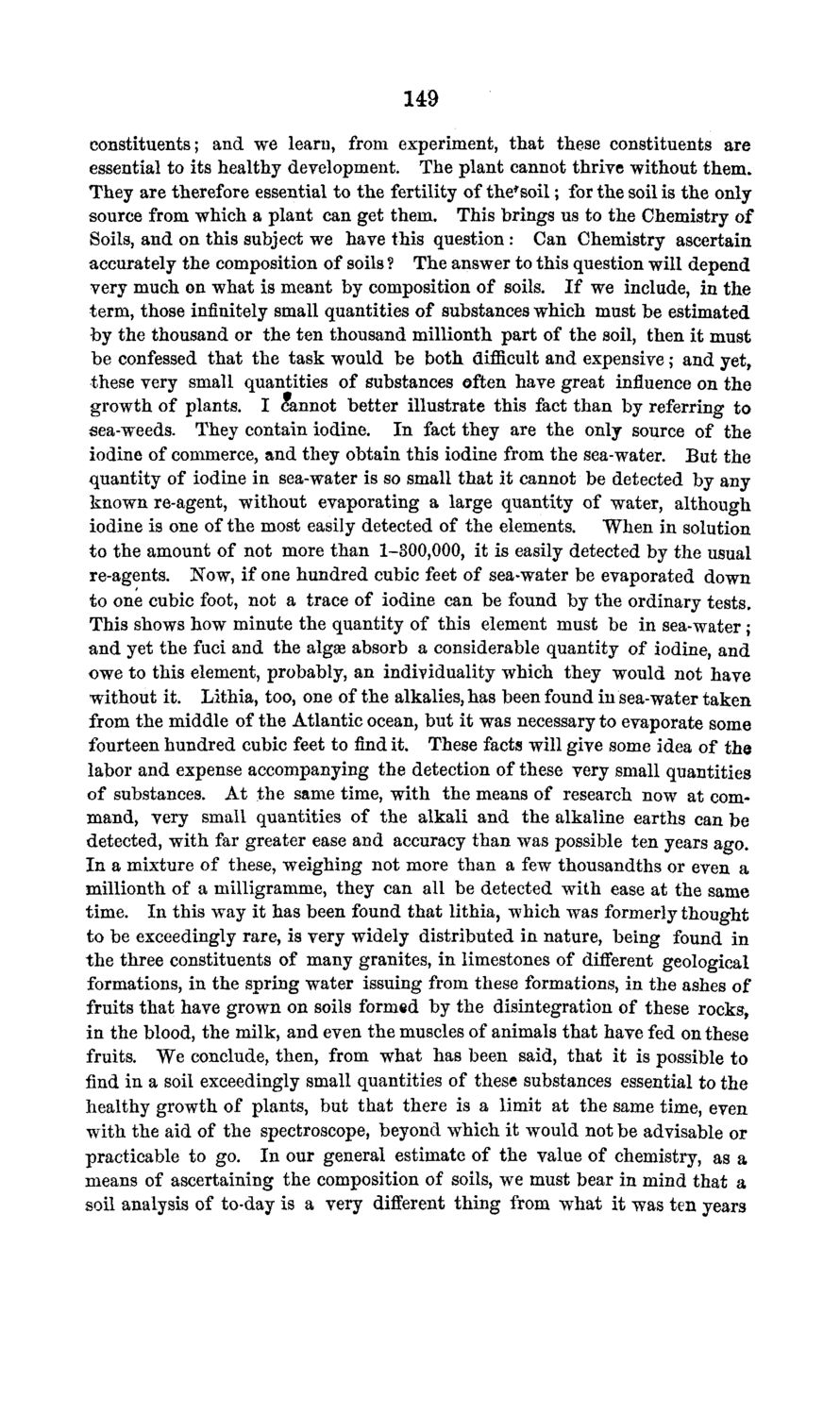| |
| |
Caption: Board of Trustees Minutes - 1869
This is a reduced-resolution page image for fast online browsing.

EXTRACTED TEXT FROM PAGE:
149 constituents; and we learn, from experiment, that these constituents are essential to its healthy development. The plant cannot thrive without them. They are therefore essential to the fertility of the*soil; for the soil is the only source from which a plant can get them. This brings us to the Chemistry of Soils, and on this subject we have this question: Can Chemistry ascertain accurately the composition of soils ? The answer to this question will depend very much on what is meant by composition of soils. If we include, in the term, those infinitely small quantities of substances which must be estimated by the thousand or the ten thousand millionth part of the soil, then it must be confessed that the task would be both difficult and expensive , and yet, * these very small quantities of substances often have great influence on the growth of plants. I cannot better illustrate this fact than by referring to sea-weeds. They contain iodine. In fact they are the only source of the iodine of commerce, and they obtain this iodine from the sea-water. But the quantity of iodine in sea-water is so small that it cannot be detected by any known re-agent, without evaporating a large quantity of water, although iodine is one of the most easily detected of the elements. When in solution to the amount of not more than 1-300,000, it is easily detected by the usual re-agents. Now, if one hundred cubic feet of sea-water be evaporated down to one cubic foot, not a trace of iodine can be found by the ordinary tests. This shows how minute the quantity of this element must be in sea-water; and yet the fuci and the algae absorb a considerable quantity of iodine, and owe to this element, probably, an individuality which they would not have without it. Lithia, too, one of the alkalies, has been found in sea-water taken from the middle of the Atlantic ocean, but it was necessary to evaporate some fourteen hundred cubic feet to find it. These facts will give some idea of the labor and expense accompanying the detection of these very small quantities of substances. At the same time, with the means of research now at command, very small quantities of the alkali and the alkaline earths can be detected, with far greater ease and accuracy than was possible ten years ago. In a mixture of these, weighing not more than a few thousandths or even a millionth of a milligramme, they can all be detected with ease at the same time. In this way it has been found that lithia, which was formerly thought to be exceedingly rare, is very widely distributed in nature, being found in the three constituents of many granites, in limestones of different geological formations, in the spring water issuing from these formations, in the ashes of fruits that have grown on soils formed by the disintegration of these rocks, in the blood, the milk, and even the muscles of animals that have fed on these fruits. We conclude, then, from what has been said, that it is possible to find in a soil exceedingly small quantities of these substances essential to the healthy growth of plants, but that there is a limit at the same time, even with the aid of the spectroscope, beyond which it would not be advisable or practicable to go. In our general estimate of the value of chemistry, as a means of ascertaining the composition of soils, we must bear in mind that a soil analysis of to-day is a very different thing from what it was ten years
| |